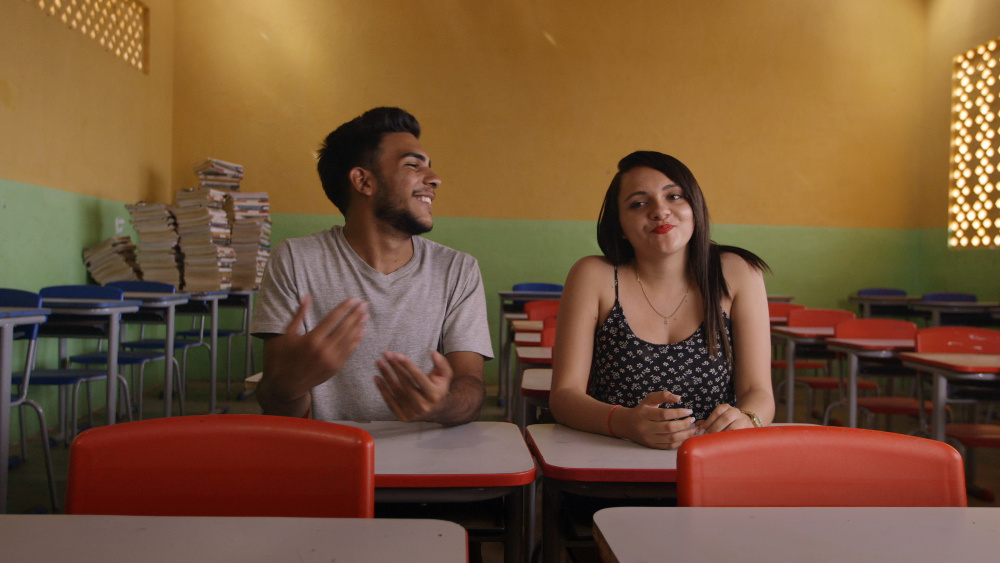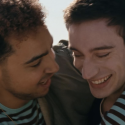More than 1,700 teenage finalists representing 78 countries take part in the annual International Science and Engineering Fair, virtually the Oscars for exceptional young biologists, physicists, chemists, mathematicians, computer scientists, doctors and more.
If they’re selected for ISEF, these young brainboxes get to show the fair’s forbidding judges what contributions they’re planning to make to our futures – and compete with each other to be named best in show. It’s a remarkable (and, as the contestants point out, very American) event, and an even more remarkable gathering of young people – certainly as pictured filling a cavernous Los Angeles conference centre in this engaging, affectionate documentary from Cristina Costantini and Darren Foster.
 The directors focus on a clutch of aspiring young international hopefuls, each covered in a brief thumbnail portrait. Outgoing Anjali from Kentucky, who has a project for detecting arsenic in drinking water, is aware that personality and presentation skills are just as important as scientific insight at ISEF. From the same school, the laid-back trio of Ryan, Harsha and Abraham are working on an AI project to collate stethoscope data online. German teenager Ivo has come up with a prototype flying wing aircraft, and slacker Robbie from West Virginia – who taught a computer to rap like Kanye West – has a head-spinning scheme to track how machine learning actually works, using (what else?) machine leaning. Coming from an impoverished background in rural Brazil, Myllena and Gabriel (pictured above) provide a striking contrast with their US and European co-competitors, and their project aims to prevent the spread of the Zika virus.
The directors focus on a clutch of aspiring young international hopefuls, each covered in a brief thumbnail portrait. Outgoing Anjali from Kentucky, who has a project for detecting arsenic in drinking water, is aware that personality and presentation skills are just as important as scientific insight at ISEF. From the same school, the laid-back trio of Ryan, Harsha and Abraham are working on an AI project to collate stethoscope data online. German teenager Ivo has come up with a prototype flying wing aircraft, and slacker Robbie from West Virginia – who taught a computer to rap like Kanye West – has a head-spinning scheme to track how machine learning actually works, using (what else?) machine leaning. Coming from an impoverished background in rural Brazil, Myllena and Gabriel (pictured above) provide a striking contrast with their US and European co-competitors, and their project aims to prevent the spread of the Zika virus.
That much we learn in Science Fair’s lengthy first act. The film then follows a well-trodden route: to take us through the teenagers’ struggles to be selected for the fair, then the tribulations of ISEF’s rigorous judging, and ultimately, the big reveal of the competition’s all-important results.
Parallels with the 2002 movie Spellbound – which follows the fortunes of eight young competitors at the 1999 US National Spelling Bee – are inevitable, and indeed the directors specifically namecheck Jeffrey Blitz’s earlier film as an inspiration. But there’s a big difference here. Almost anyone can grasp what goes into spelling a word correctly, but few of us will readily understand the complexities of these kids’ sometimes esoteric scientific research. (One of the contestants even jokes that the more incomprehensible your fair’s submission title, the more hardcore the work must be.) Even the fair’s own set-up hardly lends itself to film treatment, not least because the all-important final judging takes place behind firmly locked doors.
So bringing ISEF alive is a tricky prospect – one that Costantini and Foster achieve marvellously in terms of personality and ambition, but less so in hardcore scientific detail. Even with their lively subjects, however, there are simply too many for us to feel like we get to know them in much depth. When the fair’s overall winner is announced – and yes, spoiler alert, it’s one of the kids Costantini and Foster feature – we hardly know them, nor, more importantly, properly understand the significance of their project.
Science Fair is an inspirational portrait of young ambition, commitment and resilience, and its directors gain remarkably close access to the kids featured, following them closely across several months. But by not properly understanding these budding scientists’ projects, it feels like the audience is kept at quite a distance. It’s rather ironic – and frustrating – that while celebrating the unapologetically complex insights of these youngsters, Science Fair itself seems content skate on the surface of their achievements.
Overleaf: watch the trailer for Science Fair













